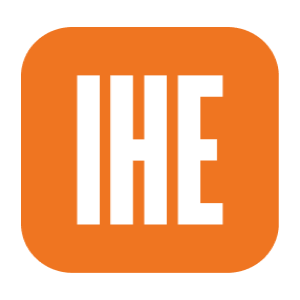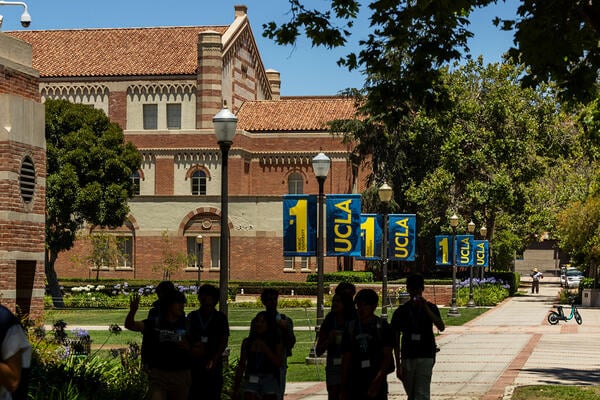From Lead-Chasing to Mission-Aligned Enrollment
I spent 16 years as an enrollment leader and another 10-plus years working with enrollment leaders. As a result, I’ve witnessed firsthand how the standard lead-generation model for building enrollment is failing institutions.
The promise is enticing: Your marketing agency delivers a list of thousands of names of prospective students, your enrollment team works the list, and students materialize. But this approach creates a vicious cycle that undermines everything mission-driven institutions stand for. It’s like the effects of taking steroids to enhance your athletic performance — you see short-term gains that appear to be unstoppable, but they ultimately take your money, identity, and health.
Here’s what I’ve learned about shifting from a lead-chasing mindset to a long-term perspective focused on building enrollment foundations that actually last.
Why Lead-Generation Strategies Fail Mission-Driven Institutions
Finding mission-aligned students requires more than asking your institution’s marketing agency to generate leads. The traditional model — buy bulk leads, work leads, generate students — seems efficient on paper. In practice, however, it produces low conversion rates, disengaged enrollment staff, escalating acquisition costs, and devastating attrition rates.
The math alone should give you reason to pause. When you generate more leads, you need more enrollment personnel to work them. Now you have two major problems: low-converting prospects and mounting personnel costs. Your enrollment counselors spend their days chasing people who don’t understand your mission, don’t fit your institutional culture, and, if they do enroll, often disappear after a term or two (often because they become a lead for another institution).
This isn’t just inefficient. It’s likely counterproductive to establishing your institution’s identity. Students recruited through generic lead generation don’t know anything about your institution or what it represents. They can’t articulate why your institution matters, which turns it into a commodity in their eyes. Students can simply ask “How long will it take?” and “How much will it cost?” and not fully realize that the college experience is about so much more than that.
Look Inward, Not Outward: The Moneyball Principle for Enrollment
There’s a powerful scene in the movie “Moneyball” in which Billy Beane, the general manager of the Oakland A’s baseball team, tells his scouts: “If we think like the Yankees in here, we will lose to the Yankees out there.” The same principle applies to your enrollment strategy, particularly for online and adult learners.
If you think like Grand Canyon University, Western Governors University, or Southern New Hampshire University when designing your enrollment strategies, you likely won’t win the enrollment game, and you’ll waste an extraordinary amount of money and time in the process.
Those institutions have built their models based on scale, national reach, and high-volume lead generation. They have the infrastructure, capital, and brand recognition to make that work. Your institution probably doesn’t, and it shouldn’t try to.
Just as consumers often turn to unique restaurants and up-and-coming artists once the chain establishments and pop stars start to feel too ubiquitous and impersonal, prospective students are increasingly drawn to institutions that offer something distinctive and local. Niche markets can be extraordinarily powerful when you serve them authentically. They generate raving fans. They create word-of-mouth referrals. And they build communities that sustain themselves.
Your competitive advantage isn’t going to come from outspending the national players. It can only come from your institution being exactly what it is, something that no other institution can be. It’s about attracting students who are attracted to your mission and vision.
Understanding the Complete New Student Journey
Creating a mission-centric marketing strategy begins with understanding every aspect of how prospective students experience your institution: from the design of your logo the first time they see it through the response to their first communication, the cadence of subsequent touches, and the tone of every interaction.
One of my greatest frustrations in how higher education operates is the request-for-information (RFI) process. We ask students to provide their information and then tell them to wait for someone to contact them.
Almost no other industry operates this way anymore. Imagine filling out a form on Amazon and receiving a message that says, “Thank you for your interest. Someone will call you within 48 hours to help you complete your purchase.” It’s absurd. Try it out for yourself. Request information from your institution and see what happens.
My advice is to move away from the “Thank you, someone will be in touch” message immediately. Create an instant post-RFI experience that welcomes students and allows them to explore right then and there. Give them immediate access to program information, faculty insights, student stories, and next steps. Let them self-serve while your enrollment team prepares for meaningful, high-value conversations with them.
When students arrive at those conversations already informed and engaged, conversion rates improve dramatically and the students who enroll actually fit the university’s mission. Let’s also not forget that passionate graduates have historically led to alumni giving down the road.
Using Faculty as Your Most Credible Marketers
Building a mission-centric enrollment strategy requires faculty involvement. In the age of large language models and content generated by artificial intelligence (AI), credible human voices matter more than ever. Prospective students can spot generic marketing copy instantly. What can’t be replicated is the authentic passion of a faculty member explaining why their discipline matters and how your institution approaches it differently.
Your faculty are your best marketers, especially right now. They bring subject matter expertise, institutional knowledge, and genuine enthusiasm to your messaging. They can articulate your mission in ways that marketing agencies never will. When faculty are engaged in creating content, participating in virtual information sessions, and connecting with prospective students during the exploration phase, the return on investment is extraordinary.
Embracing Cybernetics: Governance That Learns and Adapts
If you haven’t read Robert Birnbaum’s “How Colleges Work,” I strongly recommend it. Birnbaum outlines four organizational models in higher education, and I can typically identify which model an institution operates under after just one interaction. I can definitely confirm it if I look at their historical enrollment data.
For enrollment management specifically, I advocate for what Birnbaum calls the cybernetics model. Cybernetic systems are self-correcting. Teams gather feedback, learn from outcomes, and adjust their strategies accordingly. This stands in stark contrast to the way the political, bureaucratic, and collegial organizational models that often dominate campus decision-making operate.
A cybernetic approach to enrollment planning means:
- Creating governance structures in which teams have genuine authority to act
- Establishing clear feedback loops among marketing, admissions, student success, and academic affairs
- Using data to inform decisions rather than defend territories
- Building accountability that’s linked to shared outcomes rather than departmental metrics
- Adapting strategies based on what actually works, not what teams wish would work
A cybernetic approach requires institutional leaders, particularly presidents and provosts, to take ownership of the enrollment vision and build governance bodies that align departmental goals with shared institutional goals. Cross-functional committees need decision-making power, not just advisory status. And planning must extend beyond annual cycles to capture multiyear trends and institutional transformation.
Reallocating Budgets for Mission-Aligned Impact
Shifting to a mission-driven enrollment strategy requires budget reallocation. You must move dollars away from lead volume activities and toward initiatives that create lasting impact, such as:
- Faculty-driven enrollment strategies that showcase your distinctive strengths
- Mission-driven search engine optimization (SEO) and generative engine optimization (GEO) strategies that capitalize on these distinctive strengths
- Content creation that tells your institutional story authentically
- Relationship-building programs that deepen community connections
- Course scheduling systems that ensure students can access the right courses at the right terms
These investments usually don’t generate immediate returns in the same way that purchasing 10,000 leads might. But they compound over time. They build an institution’s reputation. They create the conditions for sustainable enrollment growth rather than the enrollment roller coaster that exhausts everyone involved.
Key Takeaways
- Lead-chasing produces shallow growth that fades quickly and corrodes an institution’s culture. The alternative isn’t to abandon growth. It’s to anchor growth in the institution’s actual identity and what it genuinely offers.
- Mission-aligned enrollment requires a commitment to optimizing the entire new student journey, from first awareness through graduation and beyond. It demands faculty involvement, genuine differentiation, and governance structures capable of learning and adapting.
- Gone are the days when institutions could buy leads, work the leads, and generate students. That approach leads to poor outcomes for everyone: low conversion rates, disengaged employees, escalating costs, and high attrition.
- The institutions that thrive in the coming decade won’t be those that outspend their competitors on lead generation. They’ll be the ones that know exactly who they are, communicate it with clarity and conviction, and build enrollment systems worthy of their mission.
Stop thinking like the Yankees. Start building on the foundation you already have.
Let Archer Help You With Enrollment Planning
In my years of experience, I’ve helped many institutions establish a strong enrollment strategy. And I’m far from alone in my expertise at Archer Education. Our full-service team partners with colleges and universities of all kinds to help them build and scale their capacities.
Is your institution ready to work with a collaborative partner who takes the time to get to know you, then makes custom recommendations based on their decades of experience? Reach out to us today!










